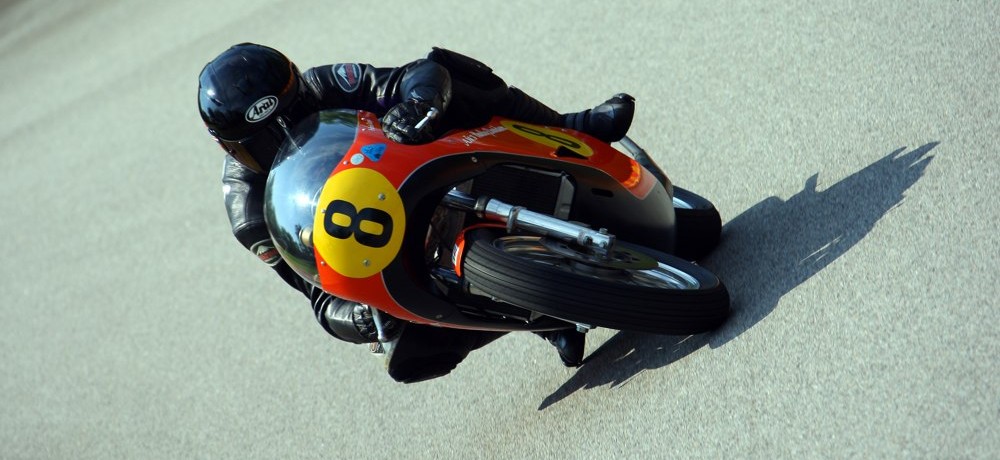We might have seen a twin-cylinder, two-stroke 500 cc race replica from Harley-Davidson on the roads of North America if the timing had been a little different
As a home-run two-wheeled Trivial Pursuit question, it has few equals: Over 40 years ago, in 1975, Harley-Davidson competed in the 500 cc World Championship against Suzuki and Yamaha with a race-winning two-stroke Grand Prix racer of its own design – true or false? Sorry to disillusion the Hog faithful, but however unlikely, it happens to be true!
Okay, not exactly a full season of GP competition, more just a handful of races on the world stage, including one for Harley-Davidson’s factory rider Gary Scott, who retired his RR500 from the Austrian GP held at the Salzburgring in early May that year with engine problems. But by then, the same such bike had already finished seventh in the season-opening French GP at Paul Ricard in the hands of Michel Rougerie, in a race won by Giacomo Agostini, making his two-stroke GP debut on a Yamaha after his shock switch from MV Agusta.
Rougerie also scored two non-title international victories in France on the RR500, and his 250/350 GP factory teammate and Harley’s reigning 250 cc world champion, Walter Villa, had given Phil Read’s four-cylinder MV Agusta a serious wake-up call in early Italian championship rounds with the same bike. Yet later that same year, the twin-cylinder four-carb H-D RR500 project died away almost as mysteriously as it had been born, leaving Harley’s Italian factory where the bike had been created to focus on retaining its 250 cc world crown with Villa that year, going on to make it a hat-trick of titles in 1976, as well as doubling up by winning the 350 cc crown that year, too.
The Italian Connection

Throughout the 1960s, Aermacchi H-D had successfully gone road racing with its air-cooled horizontal-cylinder OHV singles, sold in the Unitied States as a Harley-Davidson Sprint. But in 1971, the Varese-based factory began developing a two-stroke 250 cc twin, after its prodigal son Renzo Pasolini had rejoined Aermacchi from Benelli to race it. In 1972, Pasolini lost the World Championship by a single point to Yamaha-mounted Jarno Saarinen – only for fate to decree that they should both lose their lives in the terrible crash in the 250 cc Italian GP at Monza the following May. Pasolini’s vacant seat in the squad – by now rebaptized as a full Harley-Davidson team – was taken by the up-and-coming Gianfranco Bonera, and as Albino Fabris, one of the four men, together with Ezio Mascheroni, Claudio Lazzati and ex-racer Gilberto Milani, who made up the Harley GP team’s engineering crew, recalls, it was thanks to Bonera that the RR500 project came about.
Purchase the issue to continue reading

































